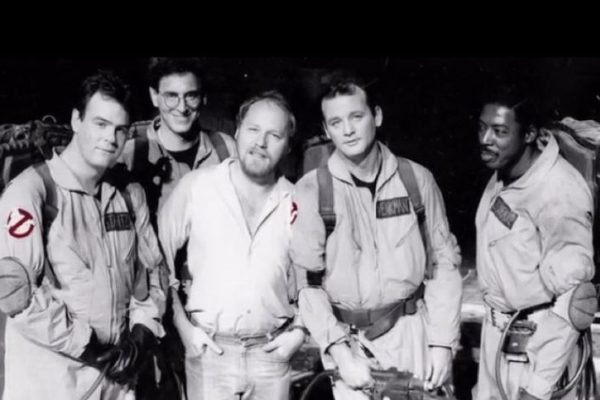Unlike many documentaries about classic films Cleanin’ Up The Town spends at least half of the running time detailing the work of the effects crew. It does so in a thorough and engaging fashion with contributions from many of those who were omitted from the final credits, as was the fashion on large projects (a fact whose permanence has faded over the decades despite print proof). It is clearly a goal of this crowd-funded doc – written and directed by sibling team Claire and Anthony Bueno – to focus on the difficulties they experienced and the logistical difficulties in delivering a special effects extravaganza.
These production headaches were exacerbated by a crazy one year schedule (from script to screen) and the need to re-write the script completely to accommodate Bill Murray not being John Belushi. Strangely that entire episode which had many moving parts and private traumas is skipped to allow Richard Edlund, Steve Johnson and Michael C. Gross to explain the difficulties with the Stay-Puft marshmallow man, the librarian ghost physics issues and the terror-dog nightmare . The latter of which involved the entire crew trying to make a larger model look exactly like a much smaller model. Sadly that sequence is now the most obviously dated of the original effects, most of which can be appreciated as excellent example of early eighties practical effects.
There are some interesting reflections despite the comprehensive approach from the filmmakers; Reitman’s decision to not inform Frances E Nealy, playing the hotel maid, about the imminent pyro is a humorous memory for the stunt guys, but accompanied with an uncomfortable subtext. Meanwhile Ernie Hudson’s reflection’s about the problems gaining access to the set highlight a certain prejudicial and class-based attitude of the minor members of the crew. Again the fleeting possibility of gaining a socio-political insight is jettisoned in favour of covering every aspect of production as though the Buenos are ticking off a crowd-funded shopping list.
A modern audience will forget that Hudson was initially absent from promotional material and the iconic imagery from Ghostbusters was just Murray, Aykroyd and Ramis. His inclusion as a full member of the ensemble is an example of historical revisionism allowing younger fans to enjoy raucous un-PC eighties comedy despite, according to Ramis, it being ‘a boy’s club’ (white boys, of course).
The lack of interest in addressing the Ghostbusters’ contemporary legacy means that the doc stays on the safe side of the aforementioned issues. When it comes to identifying the secret sauce of the original it indirectly suggests that the passion and exertions of the effects crew was somehow translated into cinematic gold; which makes the lack of recognition they received all the more galling.
In selected cinemas from Mon 7 Jan 2020
